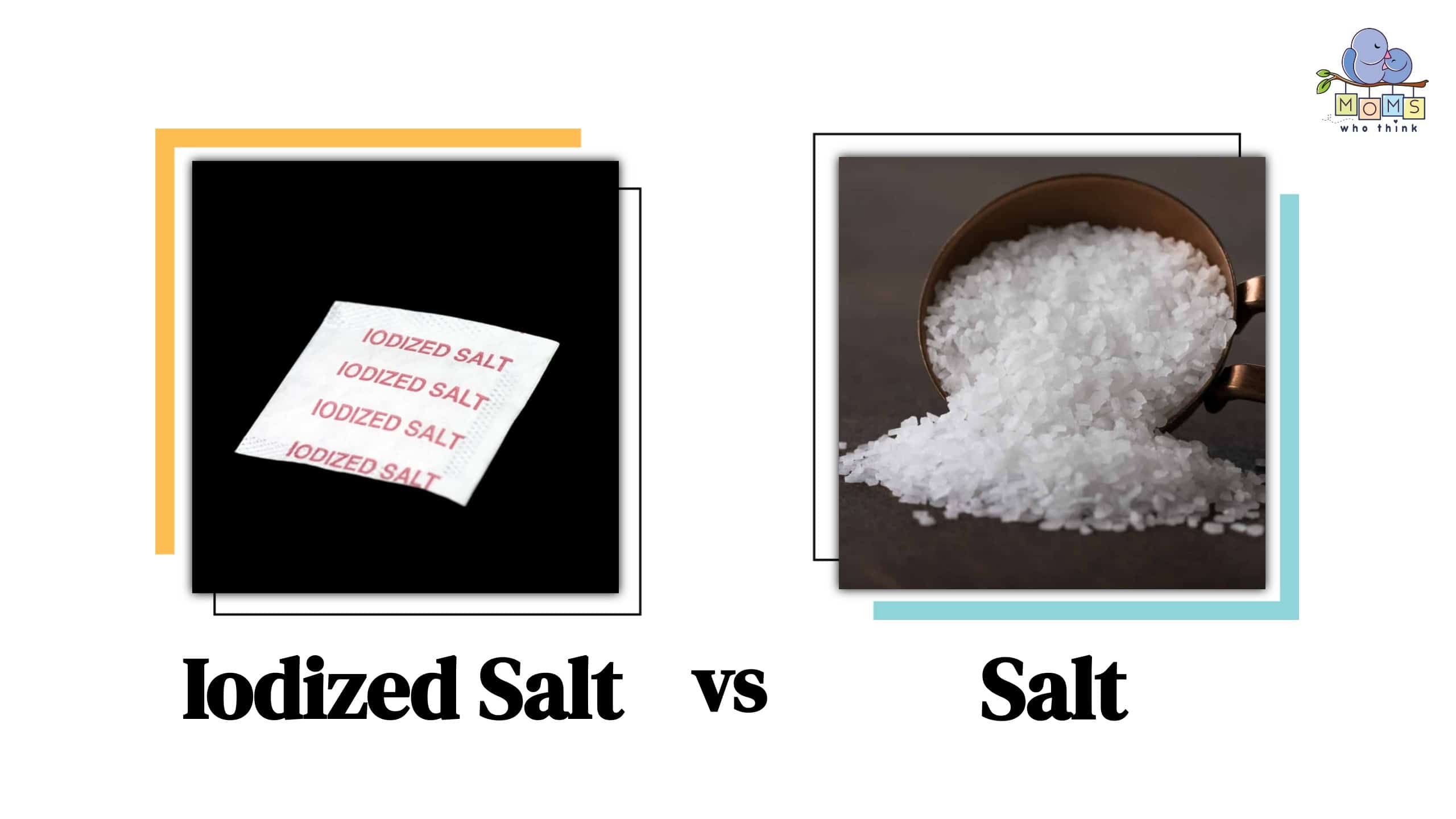It’s okay to get mixed up every once in a while, especially when it comes to telling iodized salt and plain salt apart. What’s not okay is failing to learn the differences and making the same grievous mistakes all the time!
So, here’s the catch; there are two main factors that can help in your quest to learn about iodized salt and plain salt. They include texture and taste. When your senses of touch and taste are heightened, you’ll notice a stark contrast between the two.
As the name suggests, iodized salt refers to a salt that’s enriched with Iodine. This is for the sole purpose of catering to the human body’s demand for Iodine. It helps in the prevention of the condition known as goiter, characterized by swollen thyroid glands. Salt is just, well, salt.
In this article, we'll look at key differences between iodized salt and plain salt, their differences and similarities, and how to tell them apart.
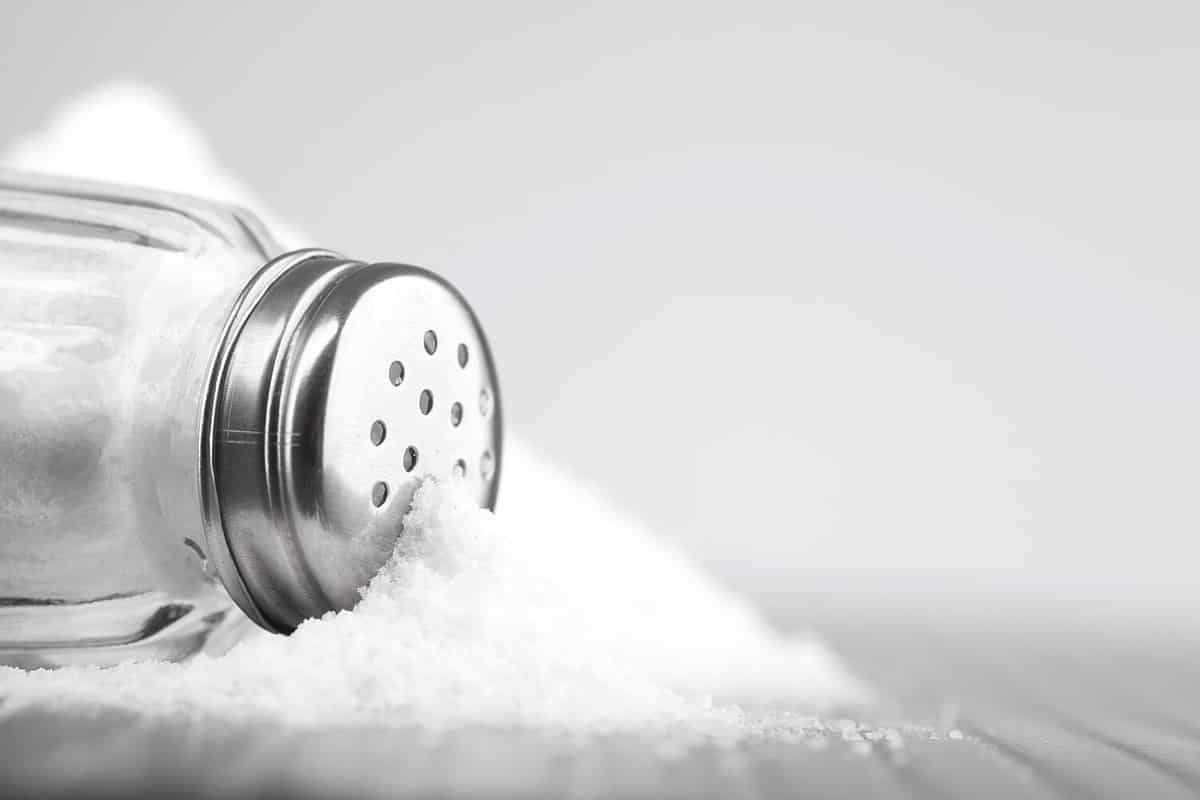
©Miro Novak/Shutterstock.com
What is Iodized Salt?
We’ve tackled this in the previous paragraph but our main goal is to go deeper. Iodized salt contains iodine added to the two already existent minerals; sodium and chloride. It contains 2300mg of sodium per teaspoon.
- The must-have convenient reference guide for every home cook!
- Includes more than 8,000 substitutions for ingredients, cookware, and techniques.
- Save time and money on by avoiding trips to grab that "missing" ingredient you don't really need.
Iodized table salt is not only for seasoning and flavoring food. It also plays a crucial role in promoting one’s thyroid health. Iodized salt works wonders for people of all age groups; children, adults, and senior citizens. Those on a doctor’s prescription are allowed to take salt but on moderate levels.
A meal with zero iodine on a regular basis is detrimental to one’s health. Young children are more prone to fall prey to the goiter menace as their systems are not fully developed to fight it off. Pregnant women are also encouraged to ensure a regular intake of iodized salt to ensure the healthy formation of the thyroid hormone.
Benefits of Iodized Salt
This is for the primary reason of ensuring the overall health of consumers. We are mostly familiar with the condition, goiter, but there are others that might strike in the absence of Iodized salt.
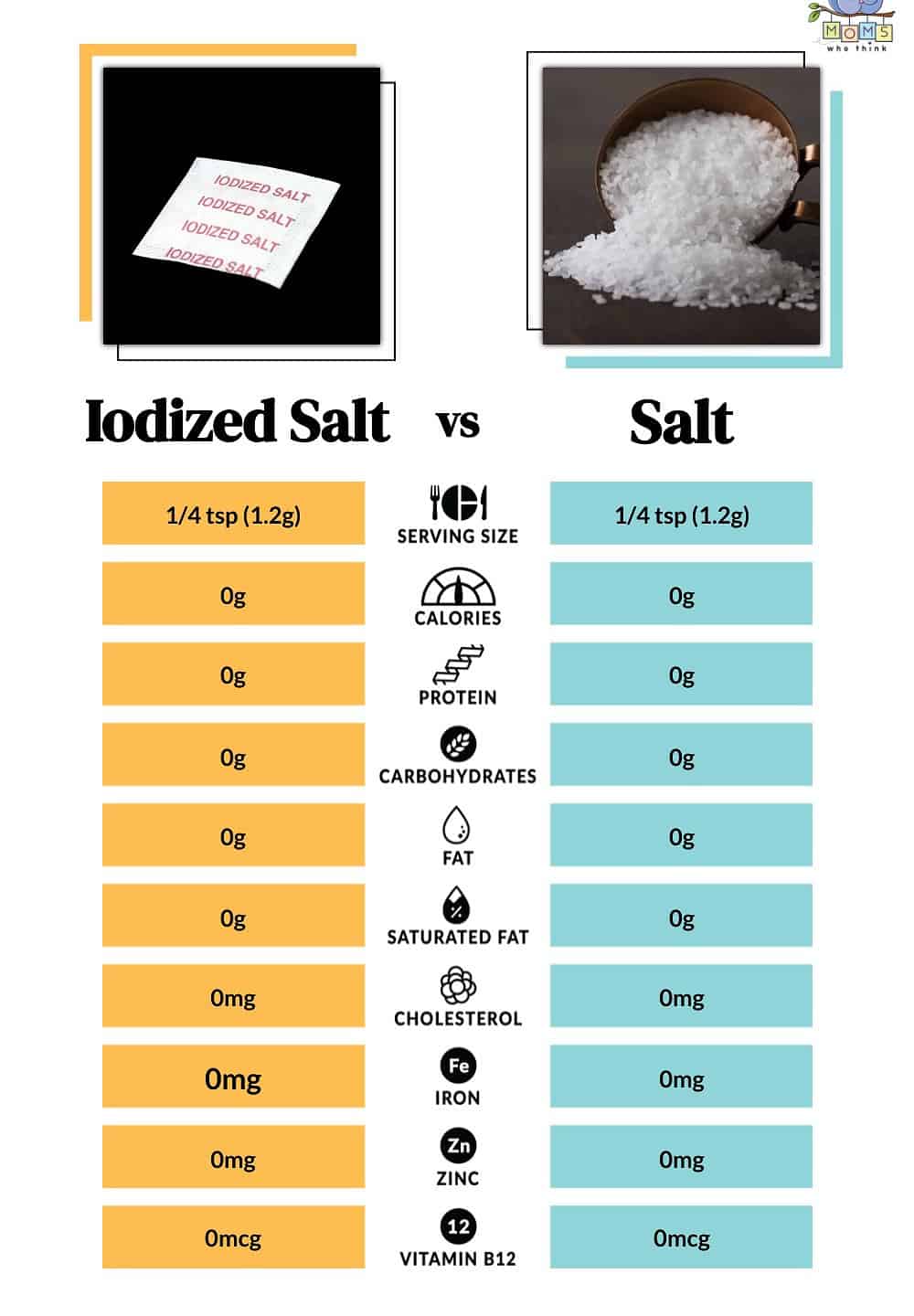
©
They include;
- Poor cognitive health in young children. This means their attention span is shorter than usual, delay in crucial motor skills such as walking and running, the speech is also affected and kids will either talk slowly or not talk at all. Their overall growth progress is affected negatively and they feel and act awkward in social settings.
- Lower thyroid count. This is better referred to as hypothyroidism. This is characterized by thyroid hormones in the blood that are lower than normal. In such cases, affected individuals exude signs of cold intolerance. This means they feel cold even in warm and room temperatures. This happens due to low thyroid hormones which are responsible for the control and regulation of body temperatures. Other symptoms include; fatigue, hair loss, unusual weight gain, dry skin, constipation, depression, and brittle nails, among others.
- Slower growth levels for the unborn. Expectant women should pay close attention to their unborn babies’ progress. Doctor’s visits will shed more light on this impediment and encourage mothers to pay special attention to their meals. Including iodine in their diet is a primary way to prevent slow growth levels for unborn children, infants, toddlers, and children whose systems are not fully developed.
As seen above, iodized salt, or table salt, is widely recommended because of the benefits of its iodine content. It is also loved and used all over the world to flavor dishes and as basic seasoning. It contains no cholesterol, fats or carbs, making it a hit among weight watchers. However, users are warned to consume salt in moderate amounts because of its adverse effects.
Uses of Iodized Salt
Aside from adding flavor to food, Iodized salt has a variety of other non-food related uses;
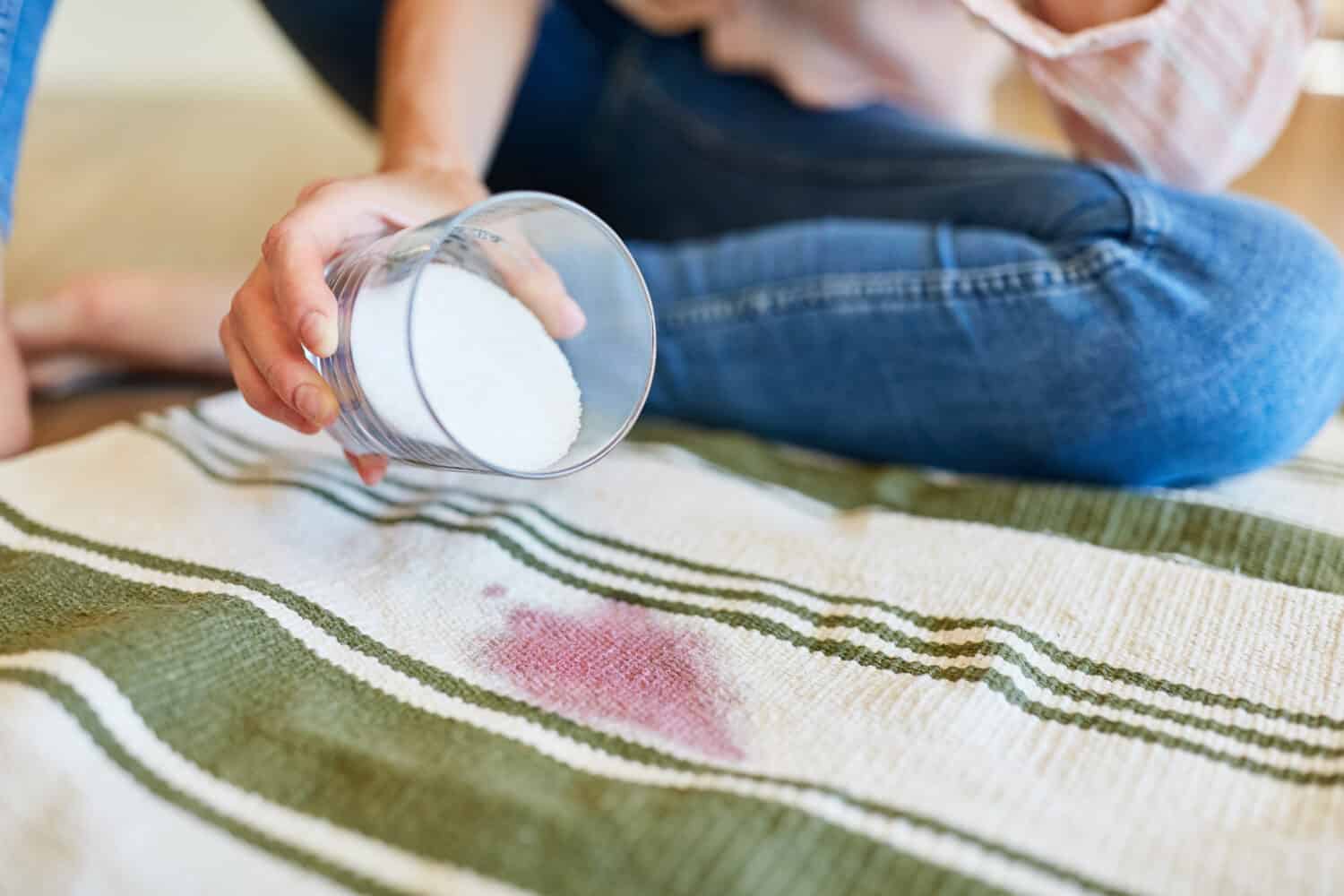
©Robert Kneschke/Shutterstock.com
- Cleaning – Table salt has earned an enviable spot in most households due to its natural ability to get rid of stains. Most moms swear by it when it comes to laundry as scrubbing tough stains on pots and pans.
- Air freshener – In case you’d like to try out something other than the usual air freshener bought at stores, why not improvise? Table salt possesses some air-freshening qualities that will work effectively in your atmosphere.
- Removes red wine spillages – Sprinkle a generous amount of iodized salt on the affected area and allow it to sit for about ten minutes. This allows the salt to absorb the red wine stains and leaves salt particles behind instead. This makes it easier to clean what’s left through vacuuming, if you're working on a carpet, for instance.
- Makes for quality ironing – When ironing your laundry, there’s that bump that really stands out when you pass the iron through a button or zipper. Table salt comes in handy and helps get rid of these unsightly marks on your clothes. It works when you add a dash of salt to a piece of newspaper, fold it, then place it on the affected area and iron it out gently back and forth.
- Kills weeds – Salt helps especially when the weeds grow in between cracks on pavements on walls. Sprinkle some salt on the weeded area and watch the fireworks. Better still, try making a salt solution consisting of one cup of salt and two cups of water. Pour this into the weeds and allow time for the salt to perform its duty.
Storage of Iodized Salt
Iodized salt will only live up to its benefits and uses when stored properly. One thing to always remember is that salt has a natural tendency to absorb different scents and odors. This means it will later affect its roles, especially in the kitchen. Imagine adding a dash of salt to your stew only to leave the smell (and taste) of your air freshener lingering in your taste buds. Annoying, right?
So, this brings us to our point. Always ensure that you store your table salt in an airtight container to avoid it picking these smells along with moisture from the atmosphere. Keep the salt container locked up in a dark cupboard away from direct light.
Remember to shake your salt container vigorously before using it to ensure the minerals are mixed evenly. Letting the salt sit for days on end causes the iodine to get settled, leaving you with just the salt’s bare minimum.
What is Salt?
If someone asks you, (which they will), salt is a crystal. You’ll sound more Harvard-educated when you add that salt is a crystal made up of sodium and chloride elements. So, aptly put, salt is a rather basic term that requires a further breakdown.
Where Does Salt Come From?
Salt is extracted primarily from water bodies such as seas and lakes. Evaporation takes place when the temperatures are too high, leaving behind salt sediments. Salt undergoes various processes before making it to our stores and tables.
For instance, once extracted, the salt is unrefined. This means it contains some particles such as sand which is not beneficial to the salt. It is then separated by pouring the mixture into water, which dissolves the salt.
Types of Salt
What’s even more interesting is that there are different types of salt aside from the well-known iodized salt. Here they are:
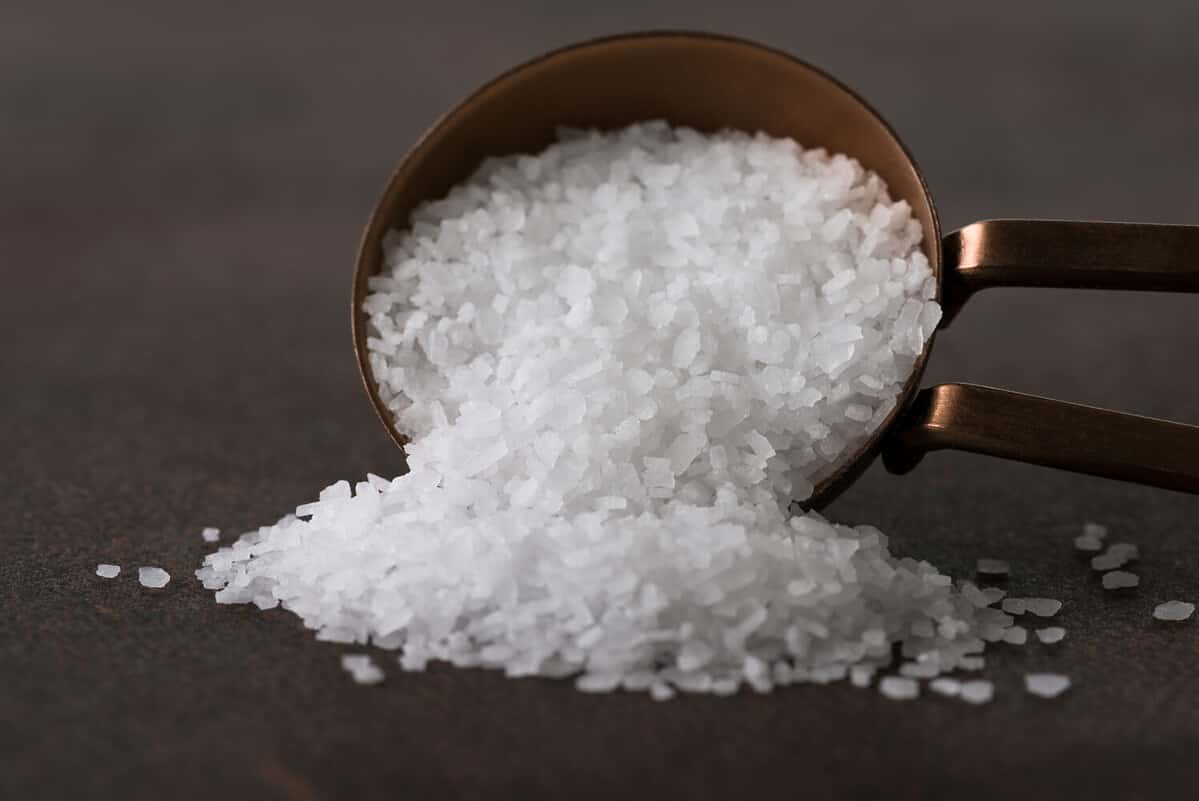
©Michelle Lee Photography/Shutterstock.com
- Pickling salt: This type of salt is used mainly for preservation purposes. It contains no known additives and lasts longer when stored adequately (airtight container)
- Kosher: It is of Jewish origin, hence the name. Kosher salt is mostly used by the Jewish in their own unique meat preparation process. In spite of its larger-than-normal crystals, Kosher salt is revered for its ability to dissolve quickly upon application.
- Himalayan Pink salt: True to its name, it’s pink in color and originates from the Himalayas. The pink color comes from other minerals it contains, including Iron.
- Black salt: If you’re willing to give it a try, beware of its sulphuric odor that may be a bit too strong to handle at first.
Uses of Salt
We tend to take salt for granted most of the time but the truth is, we need it more than we’d ever know. Here are various uses of salt that might open your eyes;
- The must-have convenient reference guide for every home cook!
- Includes more than 8,000 substitutions for ingredients, cookware, and techniques.
- Save time and money on by avoiding trips to grab that "missing" ingredient you don't really need.
- Bee sting remedy: Bee stings are a huge part of life and you’re better off knowing how best to handle them when they occur. Whatever you do, don’t allow the sting to dry up, moisten it and add salt. This should help avert the crisis.
- Keeps the fleas away. Worried about your dog carrying fleas to your couch and carpet? Use salt as part of your natural ingredients when cleaning the doghouse.
- Clean the oven: Spills become difficult to clean when they are heated up by the flames from the stove. It’s even worse when they stay for too long. Sprinkle some salt on the spill immediately after it pours on the surface. This makes it easier to clean when you’re done cooking.
- Keeps artificial flowers clean: If you’re looking to try something unique in your cleaning routines, try salt. It helps your fake flowers look fresh and clean at all times. It also helps them last longer.
- Preserves the color of freshly-peeled potatoes: Salt prevents your potatoes from adopting the much dreaded brown hue after peeling. Add some salt to the soaking water and watch them stay fresh till cooking time.
Can You Substitute Iodized Salt With Salt?
Yes and no. Yes, because most of their mineral content is similar. For instance, both contain sodium and chloride. This means you could substitute iodized salt with salt if your only goal is to add more flavor to your food.
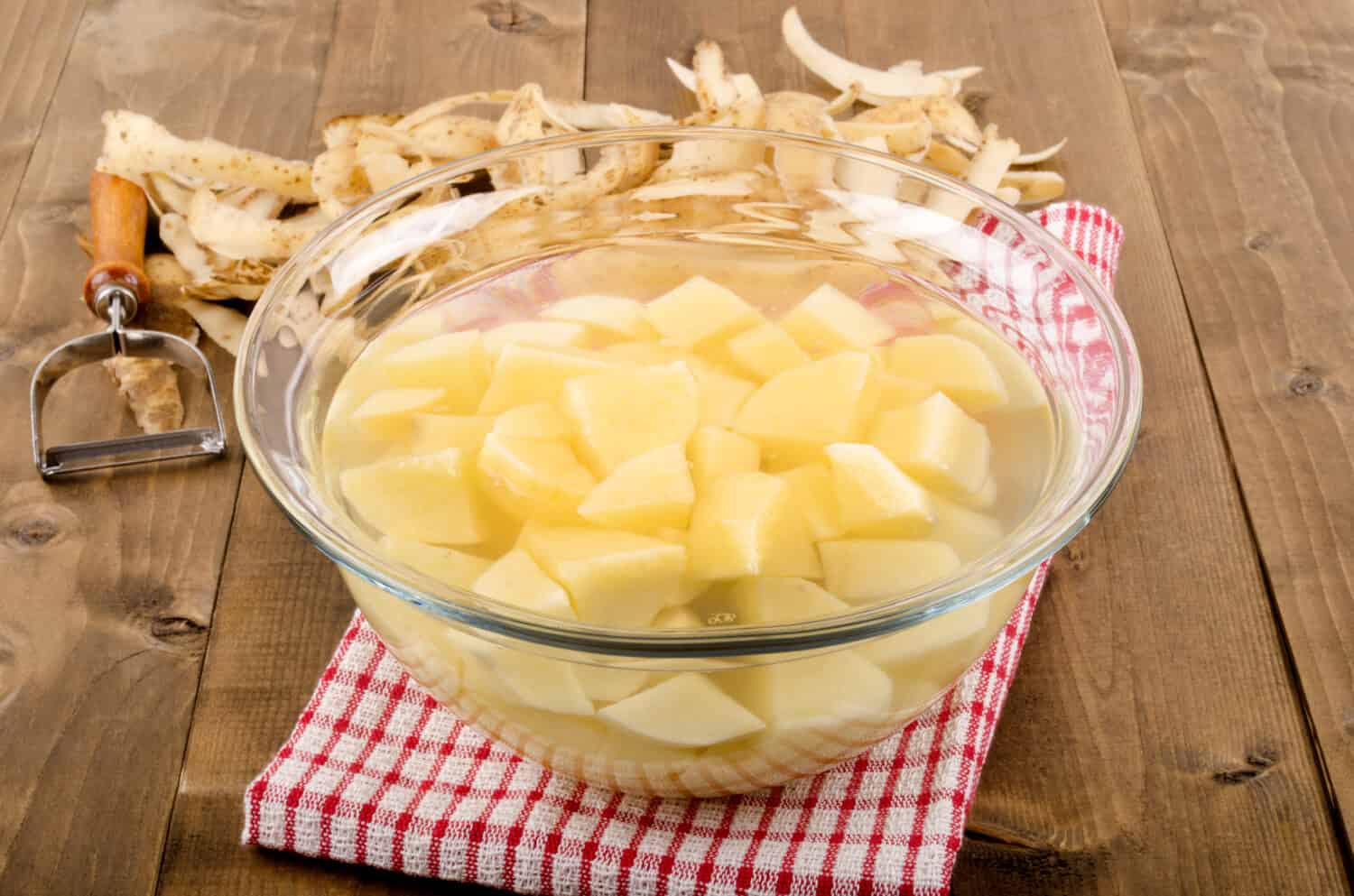
©Joerg Beuge/Shutterstock.com
No, because you can’t rely on ordinary salt for healthy thyroid formation and other health-related benefits. Iodized salt goes the extra mile to enhance the flavor of your meals and add more nutrients to your overall system.
Are Iodized Salt and Salt the Same Thing?
No, they are not. They are both salts but the one thing that makes the difference is the iodine present in iodized salt. They both go through various processes of refinement to get to their ultimate destination.
Salt exists in two forms: refined and unrefined. You may have come across the term ‘sea salt’ not once, but multiple times. That’s because the salt is actually obtained from the sea and manufacturers get to decide whether it undergoes the due purification process.
The terms refined and unrefined refer to the absence and presence of unnecessary minerals respectively. Refined salt is definitely for culinary reasons while unrefined salt is usually set apart for industrial uses. Once they are refined, it is then decided which one gets more iodine, less iodine, or none at all.
Most people also get confused as they are almost similar in appearance. Check the packaging labels and ensure they have what you’re looking for. Most brands of salt will take it a notch higher by highlighting all the mineral contents in each pack. This makes it easier to distinguish and pick what works for you.
What Are Substitutes for Iodized Salt?
In case you’d like to try out something else in place of Iodized salt for some reason, here are worthy suggestions;
- Potassium salt: This one fits the bill because it’s beneficial for those who wish to monitor their blood pressure. The presence of Potassium in the salt helps regulate or combat sodium that may be present in excess in iodized salt.
- Sea salt: It is easier to come by in case iodized salt goes on a sabbatical at some point. Sea salt is fit to stand in the gap for iodized salt due to its balanced mineral content.
- Pink salt: Popularly known as Himalayan pink salt, this alternative is a perfect fit based on the natural ways in which its extracted and processed.
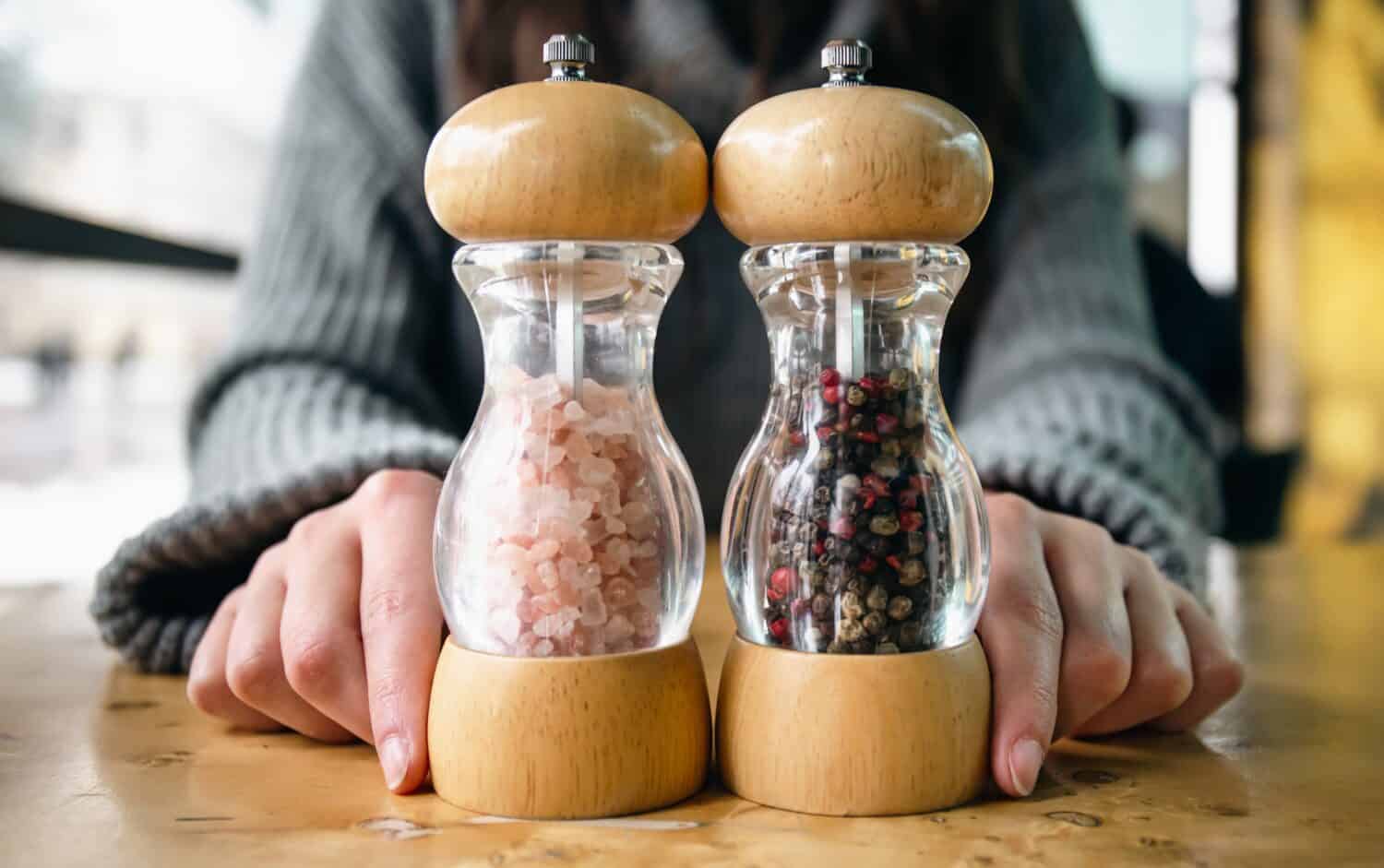
©PV productions/Shutterstock.com
What are Substitutes for Salt?
In case you’re taking a break from salt, why not employ some qualified alternatives to cover its shifts? However, some of them may only work on some recipes as we know how tasteless food is without salt!
- Cinnamon: Why? Because it’s easily available and works on both savory and sweet recipes. Not to mention its health benefits such as lowering blood sugar. It also possesses anti-inflammatory and antioxidant properties.
- Cayenne: This adds more sizzle and thrill to your meal. Cayenne is hailed for its chilli sensation which may help cut back on the salt. Try adding it to your vegetable stews once in a while to help get rid of that drab taste.
- Mint: Simple and obvious reason, it’s versatile. This means you can add it to sweet and savory delicacies. It also hosts a variety of benefits including masking bad breath.
- Ginger: Chewing on this is not a very grand idea unless you’re trying to provoke your taste buds and other senses too! Ginger is a surefire suggestion when trying out different recipes but trying to stay away from salt.
Does Appearance Matter?
Since both are crystal white in appearance, you may want to look deeper for you to tell them apart. Salt tends to change in appearance at different stages of its manufacture and even storage.
You may have come across table salt that was yellow in color and left you wondering why this was the case. Well, yellow table salt is a result of heightened temperatures after packaging. The salt is then stored at room temperature which causes the salt to turn yellow.
Also, brown salt is not such a wonder these days. This happens mostly when salt is exposed to higher-than-normal temperatures. The electrons available in a salt bow to pressure, leading it to adopt the brownish color.
We’ve looked into other colors of salt such as pink salt and black salt. Both of these colors have nothing to do with extreme heat. They have adopted these colors naturally due to the presence of other minerals which may dominate the overall salt content.
Now you know what each salt color represents, you’re welcome!
A Quick Comparison of Iodized Salt vs. Salt
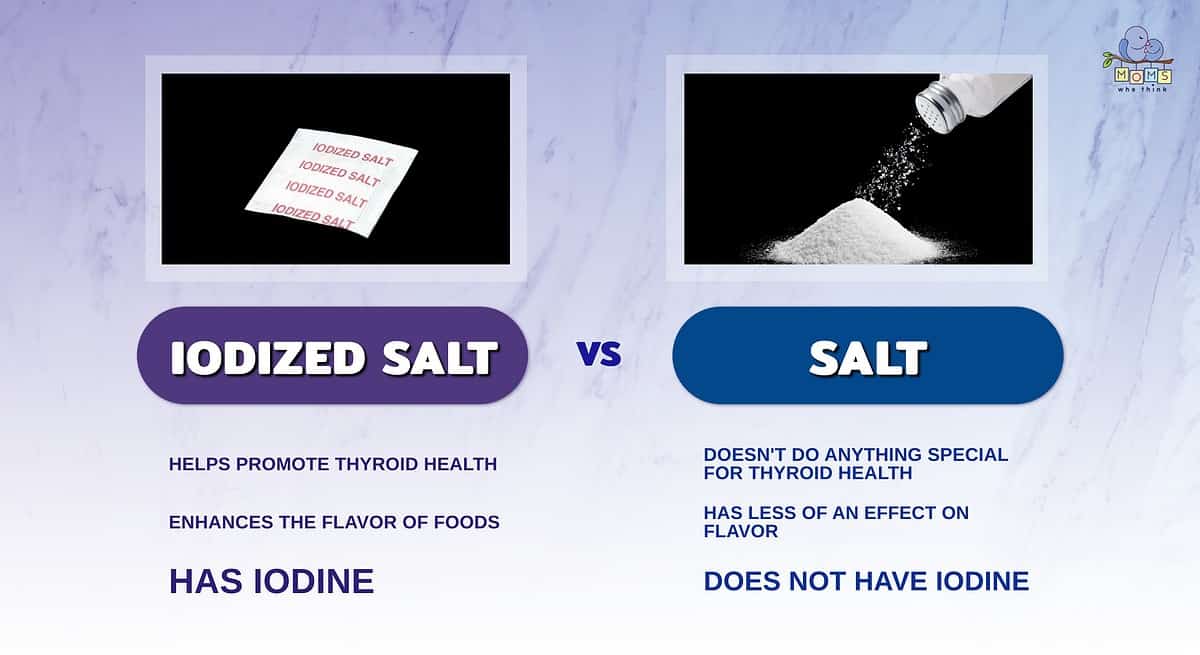
Iodized salt can help bring extra flavor into your dishes, bringing them to a level previously unknown. On top of that, iodized salt can help enhance your thyroid's health and prevent dangerous health problems. Regular salt is still perfectly fine, but it lacks the extra benefits iodized salt provides. Which option you pick is going to depend on your personal preferences, and what's most readily available in your store. Always make sure you talk to your doctor before making any decisions that could impact your health!
Print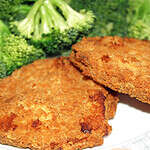
Chicken Saltimbocca with Mushroom Sauce
- Yield: 8 servings 1x
Ingredients
- 1/2 cup all-purpose flour
- 1/4 teaspoon salt
- 1/2 teaspoon pepper, divided
- 8 boneless skinless chicken thighs (2 pounds)
- 2 Tablespoons olive oil, divided
- 2 cups sliced fresh mushrooms
- 2 thin slices prosciutto or deli ham
- 1/2 cup chopped shallots
- 2 garlic cloves, minced
- 1 cup white wine or reduced sodium chicken broth
- 1 cup reduced sodium chicken broth
- 1/3 cup half and half cream
- 3 Tablespoons fresh sage or 3 teaspoons dried sage leaves, divided
- 1 can (15 ounces) white kidney or cannellini beans, rinsed and drained, divided
- 1/4 cup water
Instructions
- In a large resealable plastic bag, combine the flour, salt, and ¼ teaspoon pepper. Add chicken, a few pieces at a time, and shake to coat.
- In a large skillet over medium heat, cook chicken in 1 Tablespoon oil for 6 to 8 minutes on each side or until juices run clear. Remove and keep warm.
- In the same skillet, sauté the mushrooms, prosciutto, shallots, and garlic in remaining oil until tender.
- Stir in wine. Bring to a boil; cook until liquid is reduced to about ⅓ cup, about 10 minutes.
- Stir in broth. Simmer, uncovered, for 5 minutes or until slightly reduced.
- Stir in cream and 2 Tablespoons sage; heat through (do not boil).
- Meanwhile, in a small saucepan, lightly mash ½ cup beans; add the water. Stir in the remaining pepper, sage and beans. Heat through.
- Add chicken to the mushroom mixture and heat through. Serve with beans.
Nutrition
- Serving Size: 1 serving
- Calories: 290
- Sodium: 371mg
- Fat: 13g
- Saturated Fat: 4g
- Carbohydrates: 14g
- Fiber: 3g
- Protein: 26g
- Cholesterol: 84mg
